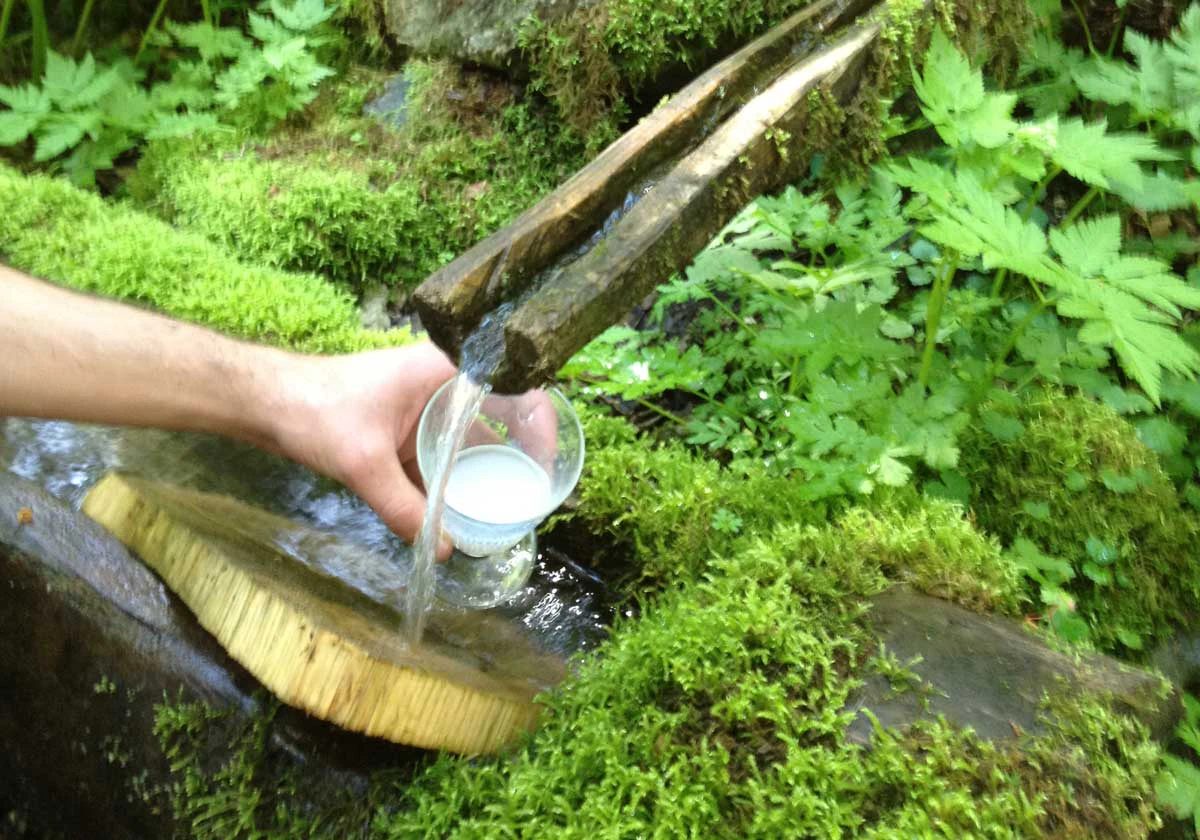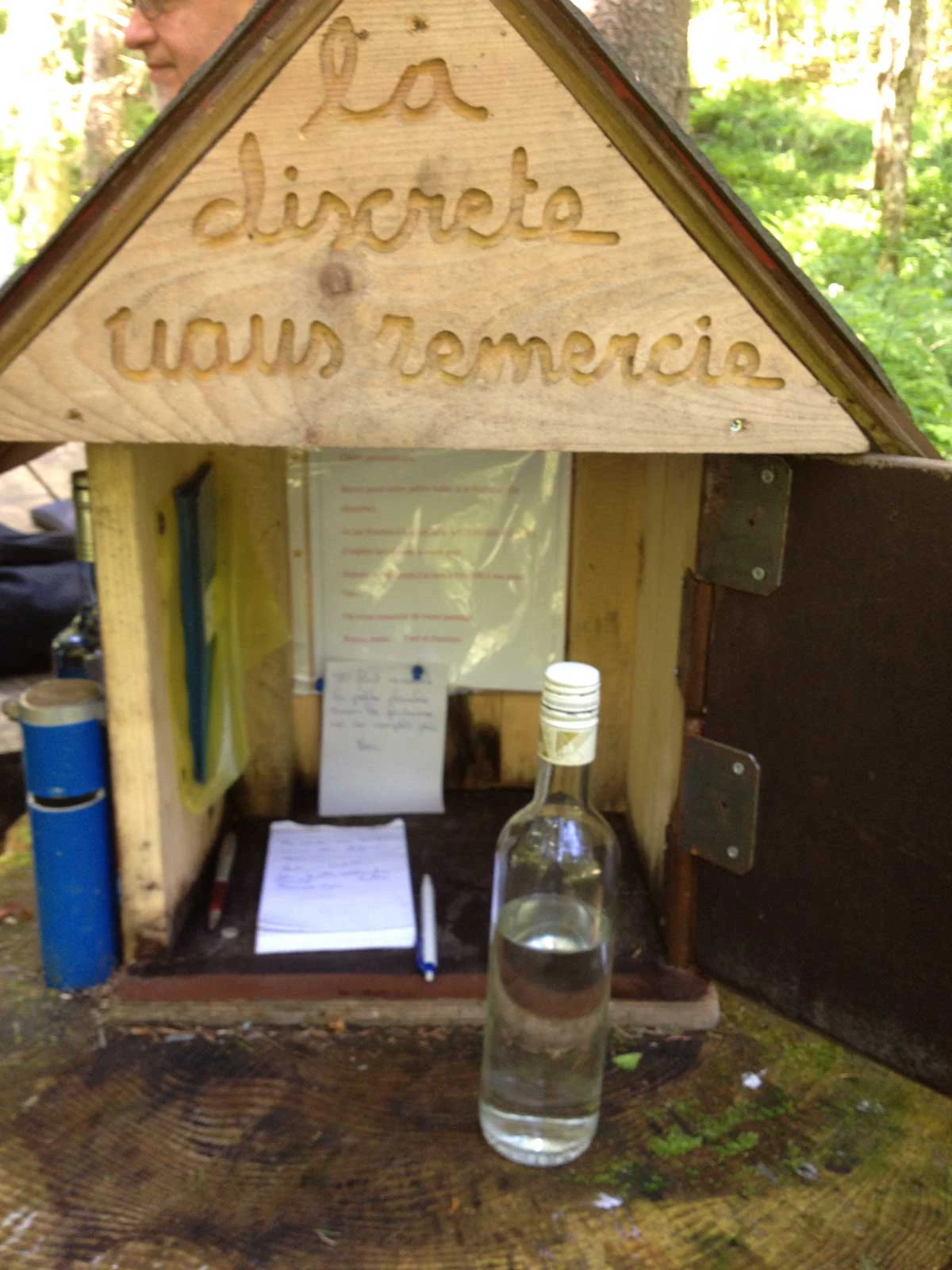Caley Shoemaker
Cofounder and master distiller, As Above, So Below Distillery in Santa Fe
“Until now, I worked at corporate distilleries my whole career, planning releases two to three years ahead. I’ve always been inspired by distilleries like Leopold Bros and St. George that sort of allow botanicals to inform their process, creating unique and different things frequently, and having a wider range of SKUs. When we opened the distillery here, my goal was always to focus on botanical spirits.
“There are going to be some people who come in that are really excited to experience absinthe in a traditional service way—and we do offer traditional service with the sugar cube and the water.
“We also found that absinthe is something that a lot of people haven’t had. Most people think it’s illegal or there’s some mystique around it. So, we wanted to work on different ways to make it more fun and approachable, to throw a twist on it. We wanted to make it a little more cocktail-like for folks who may not have had it before.
“We were really inspired by the Dead Rabbit Bar in New York. They do some alternative styles of service as well. We need to have a little bit of sugar and a little bit of water to make it absinthe service, but the sugar and water can come from elsewhere.
“We have an alternative style of service where we use orgeat, instead of a typical sugar, and mineral water, served with a lemon slice. The mineral water makes it a little more fun and effervescent.
“We also have a rotating service with different types of syrups and cordials in place of the sugar component. We’ve done that with a mint cordial before, and a raspberry one. Over the holidays we did cinnamon-vanilla simple syrup with demerara sugar. The flavors that naturally exist in the absinthe, we look to bring them out a little bit more by pairing them with a sugar source that contains unique flavor notes.
“There’s a whole separate contingent of people who come in to taste absinthe in the alternative-service way. Those people tend to be our repeat customers because of our brand and the sort of events we like to throw here. We serve a lot of the goth and alternative occult folks here, and they really love the alternative service. Orgeat with mineral water—we call it Swiss-style—which is a nod to the Dead Rabbit service. We serve a lot of the Swiss-style to the goth kids, especially when we have night markets and goth-facing music.
“We’re proud of our absinthe. It’s one of those spirits that people come here just to taste, so we want to make sure we have it served in a variety of ways.
“We can serve it in a cocktail called the coven, with root beer and angostura bitters, which is one of our most popular cocktails. A good quality root beer has a fruity, bitter, sarsaparilla vibe that pairs really beautifully with the herbal notes in the absinthe, and with a little bit of angostura and saline to balance it out. It’s one of our flagship drinks that is on the menu no matter the season.
“We use a lot of wormwood and anise in our absinthe, with some fennel as well as hyssop and marjoram. We start with a one-step maceration; the first one is just wormwood. It gets time to steep on its own for the first moon cycle. The second cycle is where we add the rest of our botanicals. There’s also some cinnamon and mint, to add a fun and interesting spicy-herbal note. At the end of that, we distill all the alcohol back out of those botanicals then finish it with a steep, with more mint and hyssop to give it that classic green color.
“To me, our absinthe is very minty. Anise and wormwood give it that traditional flavor. Most people would say, ‘Oh gosh, it tastes like licorice,’ but the minty and spicy notes that flow in there lend very well to pairing in a traditional service or in different cocktails.”
Stephen Gould
Former owner-distiller, Golden Moon Distillery, creator of REDUX Absinthe, currently writing a book about the spirit
“Absinthe has been served in a host of different ways over the years.
“It was traditionally served by mixing it with cold water and diluting it, allowing for the essential oils from the spirit to drop out and form an emulsification, what’s known as a louche. Louche means ‘shady’ in French, but it basically means to take something that is not opaque and make it opaque.
“When the essential oils emulsify, some of them will boil to the surface and hit the air. Like many perfumes, they will turn to vapor when they hit the air. So, when you louche an absinthe, you get this huge burst of essential oils. You not only smell it, but when you taste it—there are small receptors at the back of your nasal cavities in your throat, so when you’re tasting that spirit, you’re as much smelling it as you are tasting it.
“Just by diluting the absinthe, you’re getting this wonderful, light, refreshing, experience where you taste the full bouquet of botanicals and herbs that are in the spirit. It’s not just about wormwood; it’s also about everything else—wormwood is just a piece of it.
“The next part is how it is served with water. It can be a pitcher full of ice water or it can be a fountain—which is just a fancy way of adding the water. It can be fun to watch the drip. There are people who say the slower you do it, the better a louche you’ll get—that may or may not be scientifically accurate.
“The absinthe fountain and the specialized glassware come from the height of the absinthe era, the Belle Époque golden age in the late 1800s in France. Absinthe is a very expensive and laborious product to make, and everybody wanted to drink it. You began to see these absinthe palaces—pop-up bars that specialized in absinthe, and it was all about the show, the experience. So, you saw increasingly ornate glassware and sugar spoons and ways to deliver the cold water to the absinthe. It led to the fountains.
“Sugar itself is a way to hide faults in an inferior spirit, but it will also mask the incredible herbal bouquet that you have in a good absinthe. I’ll add sugar to lower-quality absinthe on the rare occasion that I drink it. Sugar is also used because wormwood has a very bitter flavor, and when people are first exposed to it, the sugar kind of balances that out a bit and allows them to enjoy the product.”

The Secret Absinthe Fountains of Switzerland
One more thing to mention here, in the context of alternative approaches to absinthe service.
If you go hiking in Switzerland, you might come across what people there sometimes call fontaines froides, or cold fountains. They look like little bird houses, located next to streams, often with a wooden channel to allow water to come off the stream—almost like a fountain.

There’s usually a little slot to put a coin into a receptacle, or perhaps just a bowl. There’s also a bottle of absinthe and a glass. Traditionally, the bottle is from a clandestine distiller—absinthe has been legal in Switzerland since 2005, but locals enjoy this custom—so there’s no brand on the bottle. You walk up, open the door, put in your coin, take the bottle, and pour yourself a dose of absinthe in the glass.
You should then also go to the little stream or channel of water, to add a bit of cold water to the absinthe. It makes for a nice, refreshing break when you’re on the trail. —Ryan Pachmayer
